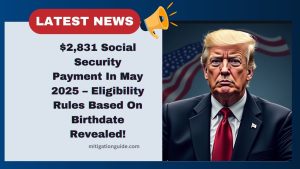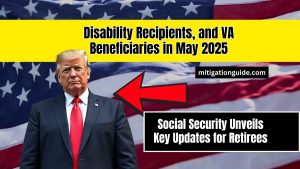In April 2025, a $1,702 stimulus payment is being distributed to eligible residents as part of an economic relief initiative. This one-time benefit is designed to help individuals and families offset rising costs of living, utility bills, and everyday expenses.
Whether you’re currently receiving government support or simply wondering if you qualify, this guide explains the eligibility rules, payment schedule, and how to make sure you receive your payout.
What Is the $1,702 Stimulus Payment?
The $1,702 payment is a one-time government-issued support initiative intended to assist qualifying individuals during the ongoing financial challenges in 2025.
It includes funding for general living expenses and additional relief targeting energy and cost-of-living pressures.
This payment is non-taxable, will not affect other benefits, and is designed to arrive directly in the accounts of those who meet the required conditions.
Who Is Eligible for the $1,702 Payment?
To qualify for the $1,702 stimulus payment in April 2025, individuals must meet the following criteria:
- Be a resident or citizen of the United States
- Be 18 years or older at the time of eligibility assessment
- Have filed taxes for the previous year (or be exempt due to income level)
- Meet specific income requirements, including:
- Individuals earning up to $75,000
- Heads of household earning up to $112,500
- Married couples filing jointly earning up to $150,000
Those earning above the threshold may still receive a reduced amount based on a sliding scale.
How Much Will You Get?
Here’s a breakdown of the stimulus payment amounts based on filing and income status:
| Filing Status | Income Threshold | Payment Amount |
|---|---|---|
| Single | Up to $75,000 | $1,702 |
| Head of Household | Up to $112,500 | $1,702 |
| Married Filing Jointly | Up to $150,000 | $1,702 each ($3,404 total) |
| Above Threshold (Any Status) | Varies | Reduced amount |
The payment may be phased out at higher income levels, and some recipients may get a partial amount depending on their adjusted gross income.
Payment Dates and Schedule
The $1,702 payments are scheduled to begin in April 2025, with direct deposits prioritized first. Those who opted for mailed checks or prepaid debit cards may receive their funds later in the month.
| Payment Method | Expected Delivery Date |
|---|---|
| Direct Deposit | April 12–18, 2025 |
| Paper Checks | April 19–26, 2025 |
| Debit Cards (if used) | April 22–30, 2025 |
To avoid delays, ensure your banking and address details are updated with relevant government systems or your tax return information.
How Will You Receive the Payment?
You will receive your stimulus payment in one of three ways:
- Direct Deposit – If your bank account is on file with your recent tax filings.
- Paper Check – Mailed to the address listed in your government records.
- Prepaid Debit Card – In some cases, distributed by mail to eligible individuals.
No application is required. The payment will be automatically issued to those who qualify.
What to Do If You Don’t Receive It
If you believe you are eligible but do not receive your payment by April 30, 2025, you should:
- Log into your government tax portal to check your payment status.
- Confirm your mailing address and bank information.
- Contact the appropriate agency to report a missing or delayed payment.
You may be asked to wait until a specific window has passed before escalating the issue, so keep checking your records and payment history first.
The $1,702 stimulus payment arriving in April 2025 offers timely relief for millions of Americans struggling with inflation and financial uncertainty.
Whether you’re using it for groceries, energy bills, or saving for future expenses, this payment is designed to give households extra breathing room.
Make sure your personal information is current and keep an eye on your payment channel so you don’t miss out on this valuable support.
FAQs
Will I need to pay taxes on the $1,702 stimulus payment?
No, this payment is non-taxable and will not affect your tax refund or increase your income for tax purposes.
What happens if I changed my bank account recently?
If your direct deposit information is outdated, your payment may default to a paper check. Make sure to update your details with the appropriate government portal.
Can I still qualify if I didn’t file taxes?
Yes, in some cases, low-income individuals who were not required to file taxes may still be eligible. Alternative verification methods may be available to confirm eligibility.




